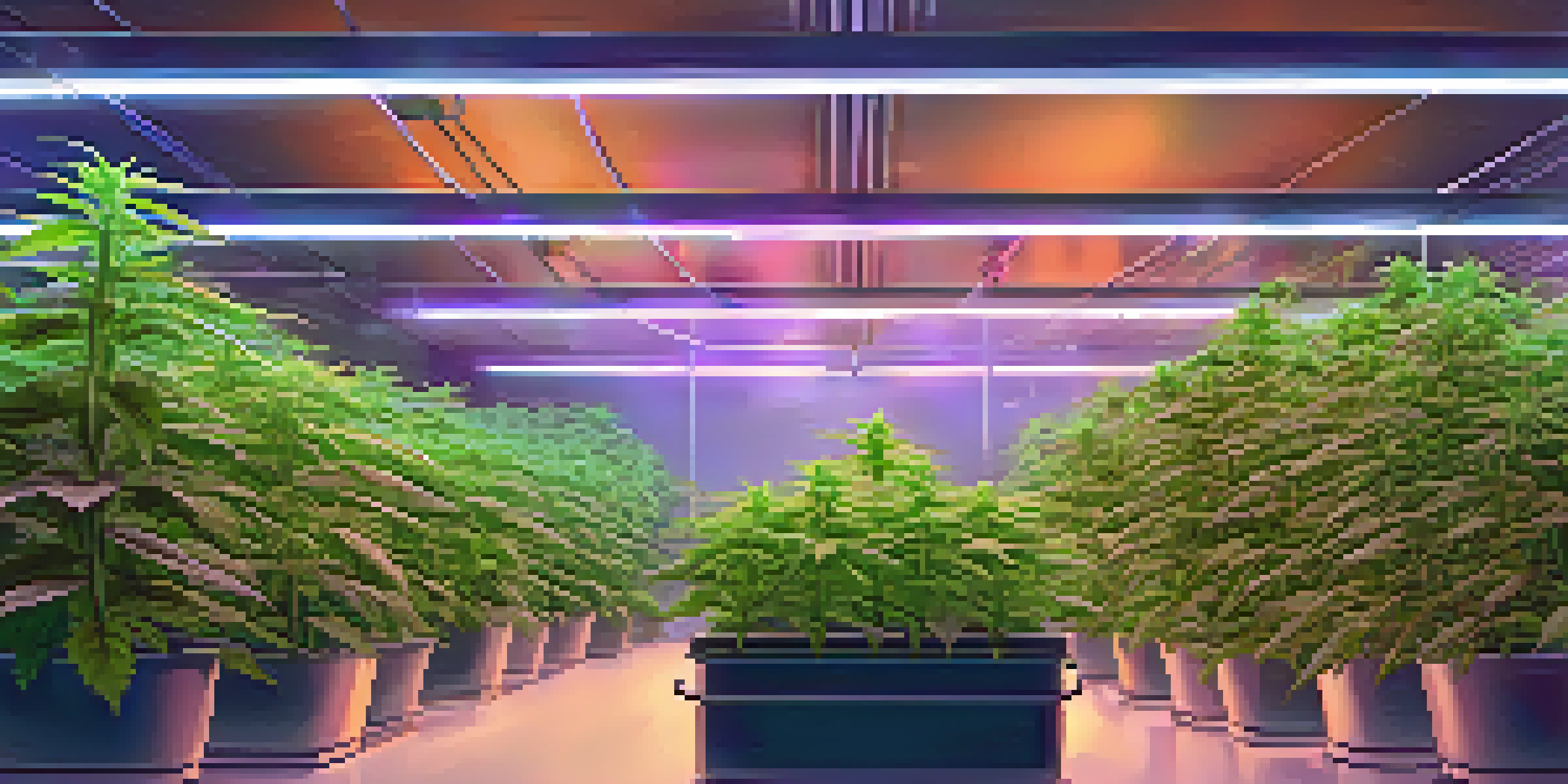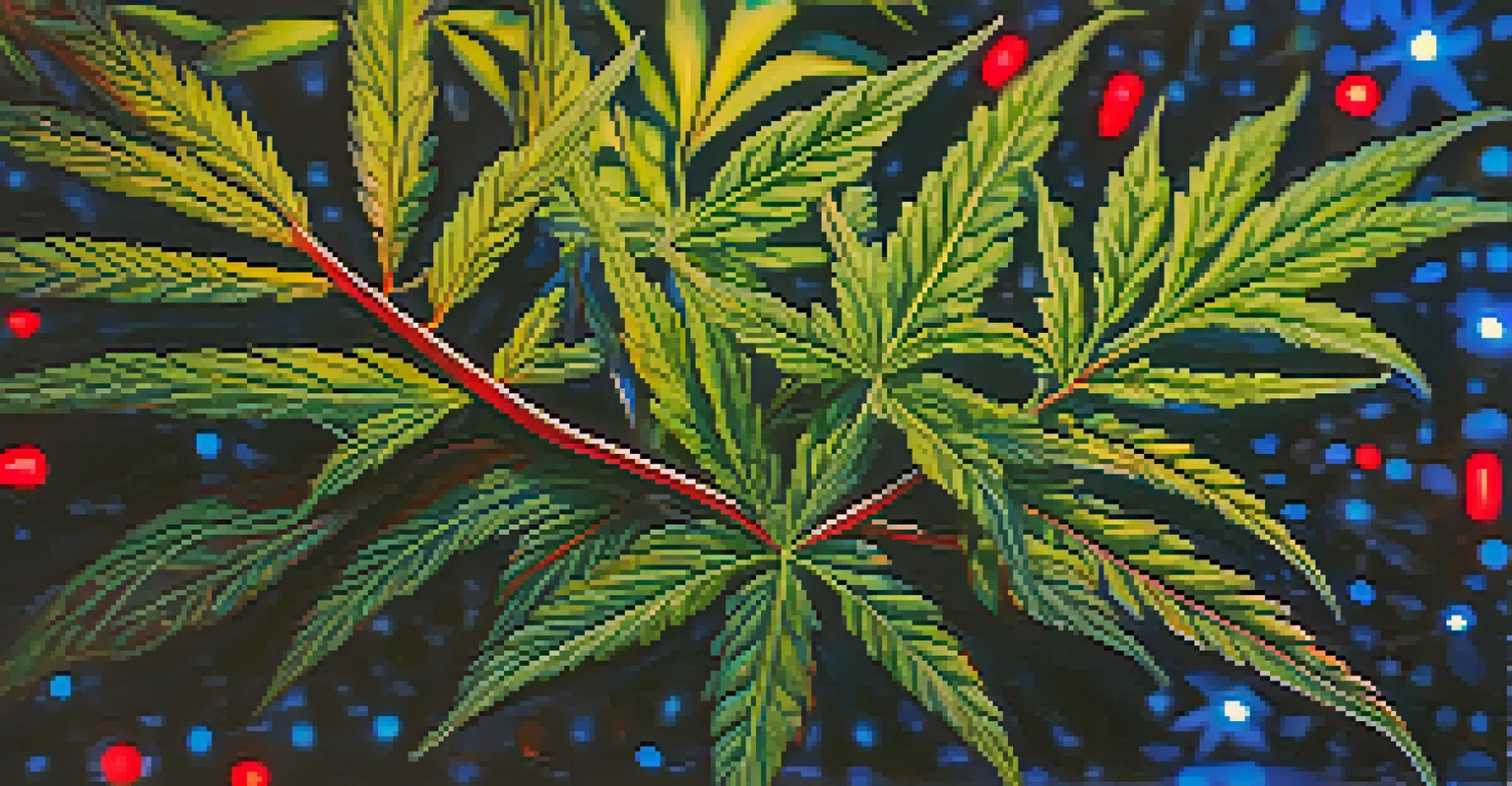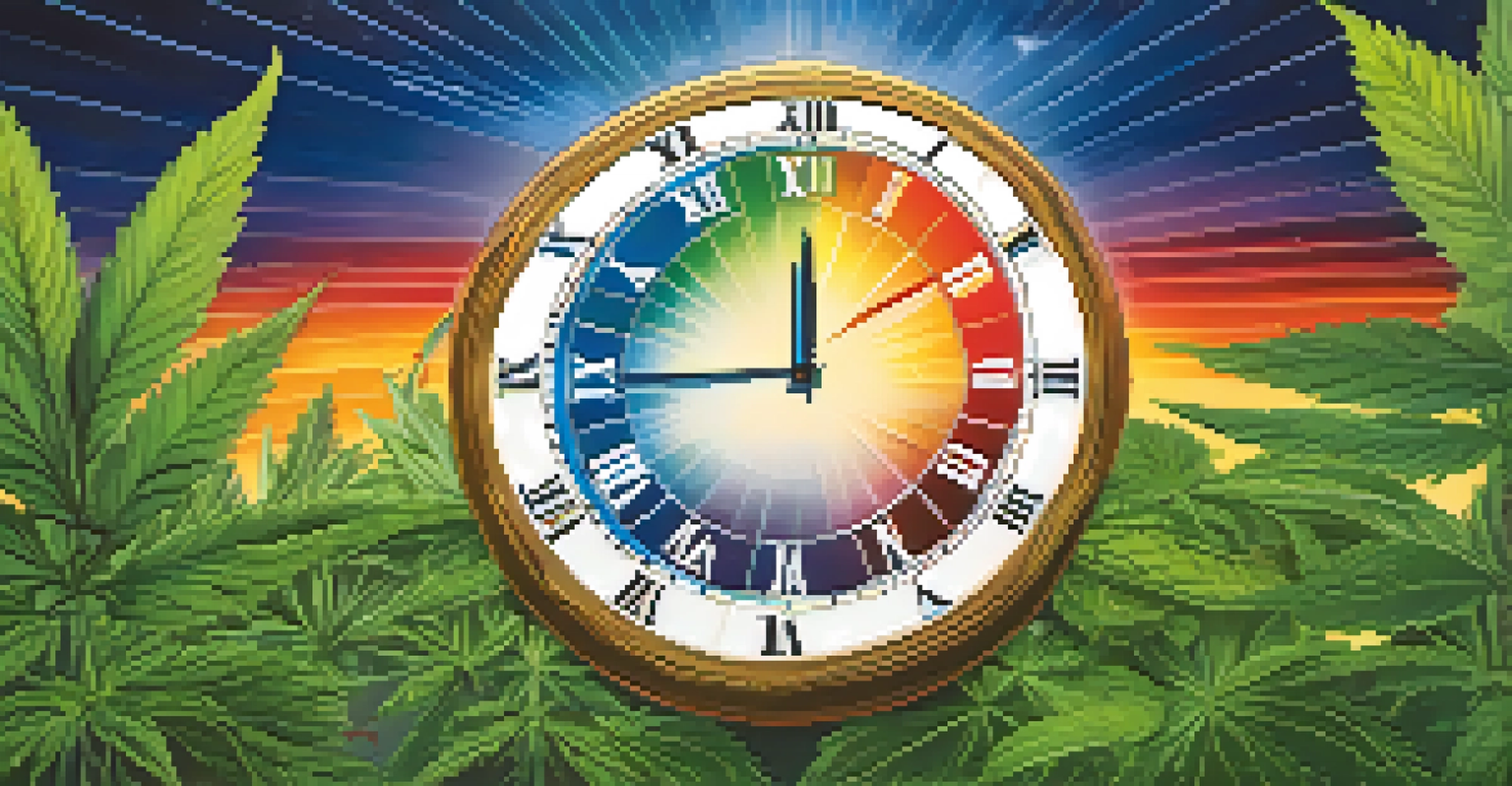Utilizing LED Lighting for Indoor Cannabis Plant Growth

Understanding the Basics of LED Lighting
LED lighting, or Light Emitting Diodes, has transformed how we think about plant growth indoors. Unlike traditional bulbs, LEDs are energy-efficient and can be tailored to emit specific light spectrums that are beneficial for plants. This makes them particularly suitable for cannabis cultivation, where light quality is crucial for growth and yield.
The light is what guides our plants to grow, and understanding it is key to successful cultivation.
One of the standout features of LEDs is their versatility; they can be adjusted to provide the ideal wavelengths needed during different growth stages, such as vegetative and flowering phases. This not only supports the health of the plants but also maximizes the efficiency of energy use. In a nutshell, understanding LEDs is about grasping their unique capabilities and how they align with the needs of cannabis plants.
As the cannabis industry continues to grow, utilizing LED technology becomes not just a trend, but a necessity for growers aiming for high-quality yields. With this understanding, we can dive deeper into the specific advantages of using LEDs in cannabis cultivation.
Key Benefits of Using LEDs for Cannabis Growth
LED lights offer several advantages for indoor cannabis growers, the most notable being their energy efficiency. Compared to conventional lighting systems, LEDs consume significantly less power, which can lead to substantial savings on electricity bills, especially in large grow operations. This efficiency allows growers to allocate resources to other critical areas of cultivation.

Moreover, LEDs produce less heat than traditional lighting, which means plants are less likely to suffer from heat stress. This is particularly important for cannabis, as excessive heat can hinder growth and reduce yields. By maintaining an optimal temperature, growers can ensure their plants thrive throughout their lifecycle.
LEDs Enhance Cannabis Growth
LED lighting provides energy efficiency and tailored spectrums that significantly boost indoor cannabis plant growth.
Finally, LEDs have a longer lifespan than other light sources, often lasting up to 50,000 hours or more. This longevity not only reduces replacement costs but also provides stability in lighting conditions, which is essential for consistent plant growth. With these benefits in mind, it's clear why LEDs are becoming the go-to choice for indoor cannabis cultivation.
Selecting the Right LED Spectrum for Cannabis
When it comes to cannabis growth, not all LED lights are created equal. Different plants require different light spectrums at various growth stages, and understanding this can dramatically impact your yield. For instance, during the vegetative stage, cannabis plants thrive on blue light, which promotes healthy leaf and stem development.
In the world of indoor gardening, light is not just a source of energy; it's a catalyst for life.
As the plants transition into the flowering stage, they benefit from red light, which stimulates blooming and fruit production. Some advanced LED systems even allow growers to switch between spectrums, providing tailored light conditions throughout the growing process. This adaptability is a game-changer for maximizing both quality and quantity in cannabis cultivation.
Choosing the right LED spectrum is not just about boosting growth; it's about aligning light with the natural processes of cannabis plants. By doing so, growers can achieve healthier plants and more robust harvests, reinforcing the importance of informed decisions in indoor gardening.
Setting Up Your Indoor LED Grow Room
Creating a successful indoor grow room involves more than just installing LED lights; it requires careful planning and setup. Start by selecting a space that can be adequately sealed to control environmental factors such as temperature and humidity. This control is vital for maintaining optimal growing conditions for cannabis plants.
Next, consider the layout of your grow room. Positioning your LEDs at the correct height is crucial. Too far away, and the plants may not receive enough light; too close, and you risk burning them. A good rule of thumb is to start with the lights about 24 inches above the plants and adjust as they grow.
Light Cycles Are Crucial
Understanding and managing light cycles is essential for maximizing cannabis yield during different growth stages.
Finally, don’t forget to incorporate other essential components like ventilation and reflective materials. Proper airflow helps prevent mold and pests, while reflective surfaces can maximize light distribution. By combining these elements and using LED lights effectively, you can create a thriving environment for your cannabis plants.
Understanding the Importance of Light Cycles
Light cycles play a pivotal role in the growth and development of cannabis plants. These cycles refer to the specific periods of light and darkness that plants experience, which influence their growth stages. For instance, during the vegetative phase, cannabis plants typically require around 18 hours of light and 6 hours of darkness to thrive.
As they move into the flowering stage, growers should shift to a 12/12 light cycle, providing 12 hours of light followed by 12 hours of complete darkness. This transition mimics natural outdoor conditions, signaling to the plants that it's time to flower. Understanding and adhering to these cycles can drastically improve the quality and quantity of your harvest.
By utilizing LEDs, growers can easily manage these light cycles with timers and programmable settings, ensuring consistent and optimal light exposure. This automation not only saves time but also helps maintain the necessary conditions for healthy cannabis growth.
Monitoring and Adjusting Environmental Conditions
While LED lights are a significant factor in indoor cannabis growth, they are just one piece of the puzzle. Environmental conditions such as temperature, humidity, and air circulation must also be monitored and adjusted regularly. For example, cannabis plants generally thrive in temperatures between 70-85°F during the day and slightly cooler at night.
Humidity levels are equally important, especially during the early stages of growth. Too much humidity can lead to mold, while too little can stress the plants. Aim for around 40-60% humidity during vegetative growth and lower it to about 40-50% during flowering to promote optimal conditions.
Future Innovations in LED Tech
Emerging smart LED technologies promise to optimize cannabis cultivation by adapting light conditions to real-time plant needs.
Regularly checking these parameters and making necessary adjustments will ensure that your cannabis plants remain healthy and productive. Using tools like hygrometers and thermostats can make this process easier, allowing you to create the ideal environment for growth.
The Future of LED Technology in Cannabis Cultivation
The future of LED technology in cannabis cultivation looks promising as advancements continue to emerge. Innovations such as smart LEDs that can adapt their spectrum and intensity based on real-time plant needs are already being developed. These technologies aim to optimize growth further and reduce energy consumption, making indoor growing more efficient.
Moreover, as more research is conducted on plant responses to different light wavelengths, we can expect to see even more tailored solutions for cannabis cultivation. This could lead to new LED products specifically designed for different cannabis strains and their unique light requirements.

In a rapidly evolving industry, staying informed about the latest LED technologies can give growers a competitive edge. As we embrace these advancements, the potential for improved yields and plant health in indoor cannabis cultivation becomes even more exciting.